In 2006, Mini decided to supercharge its reborn hatchback and connect it to a manual transmission, making one of the most entertaining production cars ever made. Two generations later, the 2021 Mini John Cooper Works GP (the third) loses most of the original experience, but there’s now 300 horsepower to marvel at.
(Full Disclosure: Keeping good on its promise that I’d get to drive the third-generation John Cooper Works GP, Mini offered a gassed-up and sanitized GP3 for the Fourth of July weekend. That’s not something you say no to after three months in quarantine.)
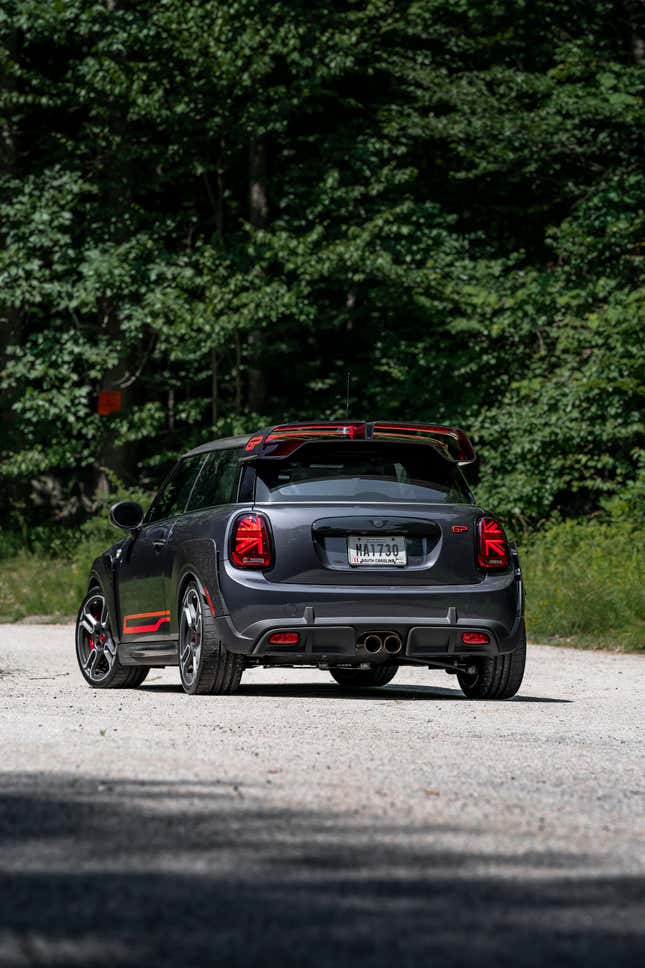
What Is It?
The 2021 JCW GP is the third generation of the high-performance nameplate usually gifted to the BMW-owned Mini Cooper generations as they’re on their way out.
The first generation debuted in 2006 as the track-focused “GP Kit,” and a few hundred cars were outfitted with an Eaton supercharged Tritec 1.6-liter four-cylinder making 215 horsepower at 7,100 rpm and 184 lb-ft of torque, for a claimed top speed of 145 mph.
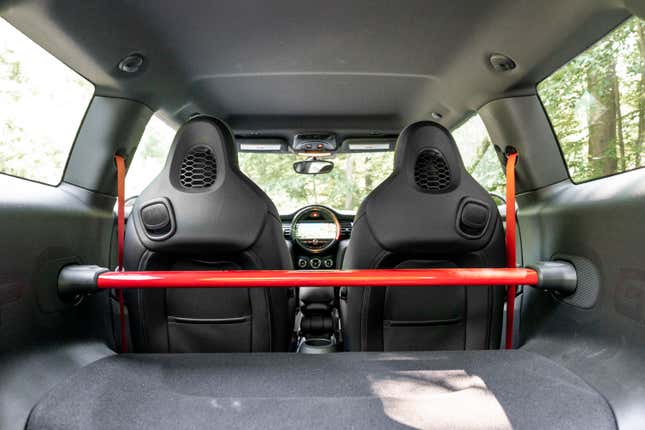
The car’s front axle tries to get away from you like a pair of big dogs on a short leash chasing a very entertaining squirrel. All of the frictional energy ripping apart the tires is radiating into your hands. The whine of the supercharger paired the hand-cranked siren that wails out of the manual transmission on downshifts is borderline traumatic.
I haven’t driven the second-generation, but it lost the supercharger for a turbo unit making 211 HP and 207 lb-ft of torque with overboost. Mini completely overhauled the suspension over the standard car, and made five times as many units, with 500 coming to the United States.
And now we’re at the third-generation, which very much falls more in line with the GP2 than the GP1: Overhauled suspension and more power for the track, and yet fewer legacy or enthusiast options, like a supercharger or a manual transmission.
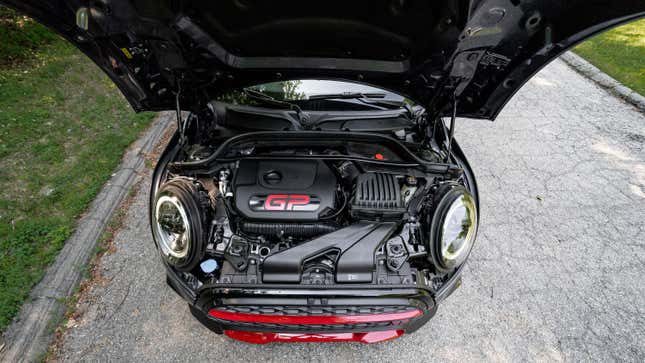
Specs That Matter
The heavily-tuned 2.0-liter twin-scroll single-turbo four-cylinder found in the GP3 is worth 301 horsepower and 331 lb-ft of torque, all channeled through the front wheels with the help of an eight-speed “sport” automatic transmission. To help manage all of that energy, the GP is also upgraded with a Torsen mechanical limited-slip differential.
Fuel economy is claimed to be 24 mpg city, 30 mpg highway, and 26 mpg combined. I tracked right on average with about 400 miles put on the car driving mostly out of the city.
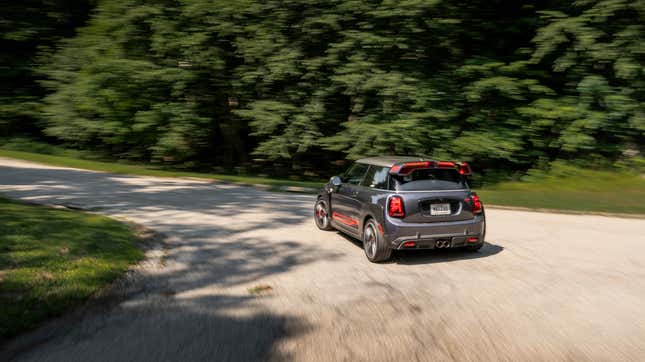
What’s Good
The GP is a beehive of fun and looks the business. There is a giant, bright red aluminum brace cutting through where the rear seats used to be. Its fenders? Square-flared. Aero? Visibly too much, maybe, but with cool effect.
The noise and drama of the supercharged original will haunt this Mini, but it still puts down 300 horsepower through the two wheels in front of you while you try to hold on, and looks appropriately ridiculous doing it.
I have sat here quite a while attempting to fathom the amount of engineering involved in the front end of any front-wheel drive hot hatchback these days, and I am giving up. On this one, the front two wheels have to actively put down up to 331 lb-ft of torque while managing the friction of potentially forcing the entire mass of the vehicle to change directions.
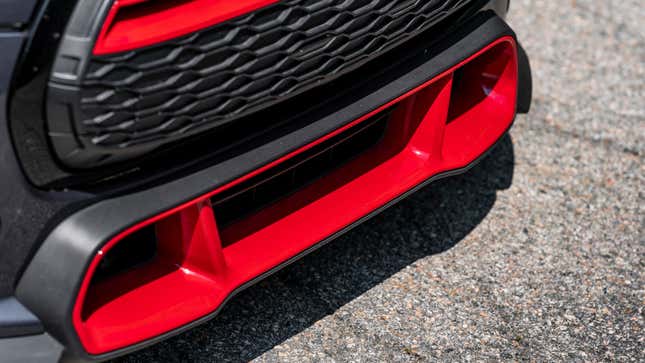
When this is not engineered to its full potential, you get what’s commonly referred to as “torque steer,” where the power twisting the front wheels breaks from the direction of where you’re trying to go and you lose traction with the road surface.
This Mini scares me a little bit, which I like. When you put the power down, especially while you’re already moving, say to pass a car on the highway, there is a moment of chaos. You can feel the front end receive its demands, you feel the power suddenly jolt you forward, and you can feel the front wheels almost scurry from under the car as it tries to get moving.
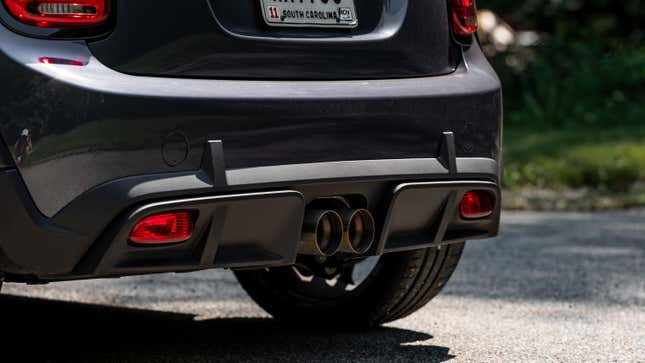
It’s such a quick moment. The car feels like it wants to pull to the left, but it’s corrected so quickly it almost feels like the front end does the smallest hop to the left as it sets off. It’s enough to tighten your grip on the steering wheel, and perhaps a sign of some of the chaotic GP1’s spirit coming through. If I’m driving a 300 horsepower Mini, I would expect it to be a little unruly.
Another committed decision Mini made that I have to respect is the lack of variable driving modes for the GP. There’s no “Comfort, Sport, Race,” etc. in the computer settings to unlock the most potential out of the car. Instead, you can shift from “D” over to “S,” like any traditional automatic. There are 3D-printed metal paddle shifters on the steering wheel, as well, and of course you can turn off traction control.
As fun as the GP3 is to drive, it’s not really engineered perfectly for a responsible level of fun on public roads. And that’s not exactly a fault of the car, nor of Mini. It’s just tuned for a racetrack. There are street Minis, and then there is the track Mini, and the visceral distinction between the two is actually to Mini’s credit here.
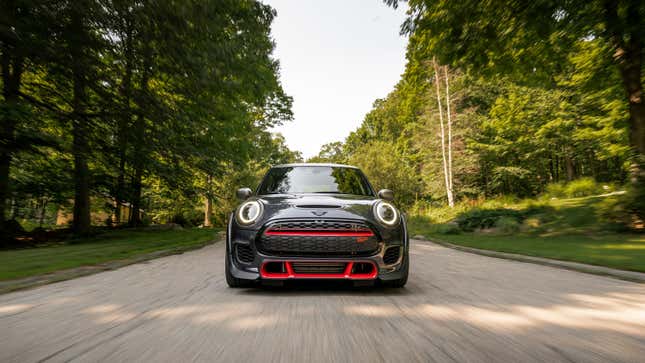
What’s Bad
Saving the question of price for later, there’s not much to dislike about a well-engineered Mini with 300 horsepower.
Realistically, the track exposure the GP is built for compromises some comforts on the road, naturally. Nobody should be surprised by this. The suspension is concrete. A hard hit is more akin to full-body whiplash, with a kick in the ass and then a sudden calm as the car seemingly electro-mechanically sorts itself, all in an instant.
I’m impressed with the car’s sustainability over the atomic potholes on the Brooklyn Queens Expressway that I do my best to avoid, four-lanes wide in heavy traffic. What’s so different from a kerb at the Nurburgring? Isn’t that what this thing is pretty much designed for? (Editor: No.)
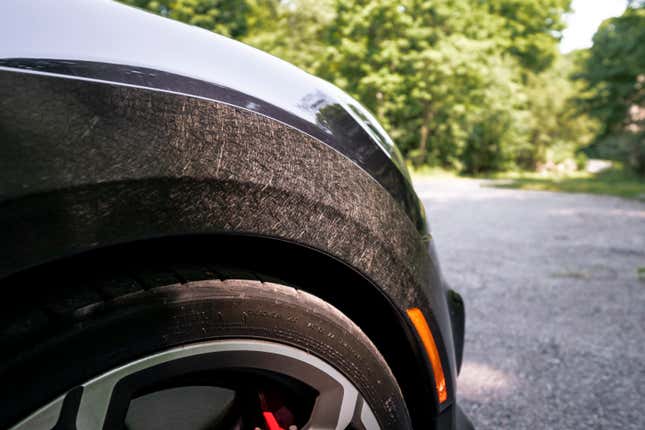
But here’s the catch. I don’t want to take a sledgehammer to the tailbone on my daily commute, which is why my address isn’t located on the ’Ring. I may go to a track sometimes, and this setup would be great. But what about the rest of my life, if I have yet to fully commit to a life of parking lot cone dancing?
The direct approach to driving modes mentioned in the “Good” section before comes across as somewhat of a compromise, too. The notion of “this car does one thing and does it well” is attractive for an enthusiast car and rarer still these days. But enough compromises in other aspects of the car’s performance have already diminished the original’s charm and character.
After supplanting BMW qualities over the original supercharged engine and transmission—what else were they going to do with BMW breathing down their neck, to be fair—it does seem somewhat fruitless to not make one more concession for a more comfortable suspension setting. If you’re not giving me a stick, at least let my ass ride in peace on the highway.
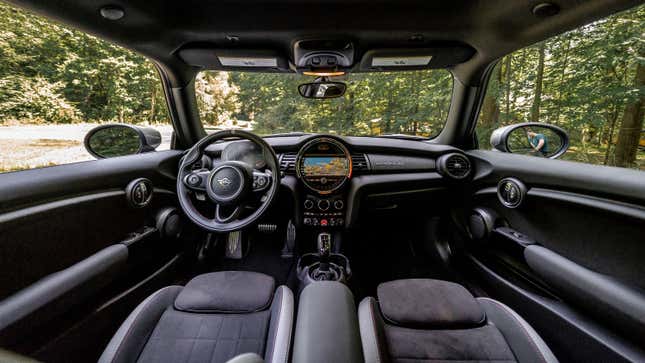
And look, I know this is how shit works now. Emissions and regulations and the lot of it means some things are just never coming back. I’m not mad that the new car is not supercharged, though I am upset it’s not manual. I’m mostly frustrated that the new car feels so much like a solid-metal, heavy BMW instead of the fun, light, and loud car they did in 2006. The car itself doesn’t drive like it’s heavy but rather feels that way through the steering and hard suspension. There’s something of a disconnect.
It’s a fast car, but unlike the original, not much more beyond the drama of the cosmetics. The car as it stands is a perfect track-day slayer for somebody who isn’t extremely tall, loves cornering, can respect a big wing, has money, or already owned a previous-gen GP. With that, there should definitely be 3,000 people to sell it to.
Also, those squared-flares were full of tiny pebbles sitting against the paint in the seams where they met the bodywork. That seems like a nightmare.

Value
Pricing starts at $45,750 factoring in destination charges. Inside, that money buys you an 8.8-inch touchscreen navigation package with Apple CarPlay and wireless phone charging, a steering wheel with a tacky thick centering line, heated front JCW sport seats in black leather, digital driver information screen, and piano black trim with anthracite black headliner.
For exterior equipment, the car gets a silver roof and mirror cap finish paired with the Racing Grey metallic bodywork, 18-inch JCW GP-spoke wheels, LED headlight cornering, and white turn signal lights.
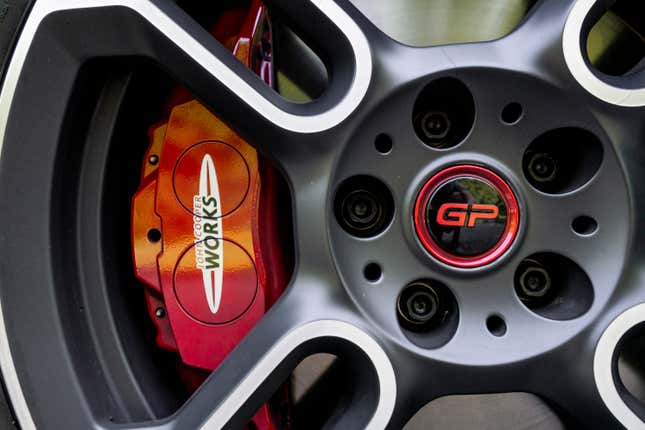
Looking at potential competition, there may be a few of the VW Golf Rs remaining, which offers 288 HP and 280 lb-ft of torque from a 2.0-liter turbo for a starting price of $41,000. While the R used to be available with a manual if you wanted, which the Mini doesn’t offer, it’s no longer available new.
The Honda Civic Type R is also a contender, pulling up with 306 HP and 295 lb-ft of torque, and a manual transmission, for the starting price of $38,000—quite a jaw drop lower than the Mini. I’m not sure I can justify such a large price difference for what each car offers, but some people like Minis and other people just don’t like how the Civic looks.
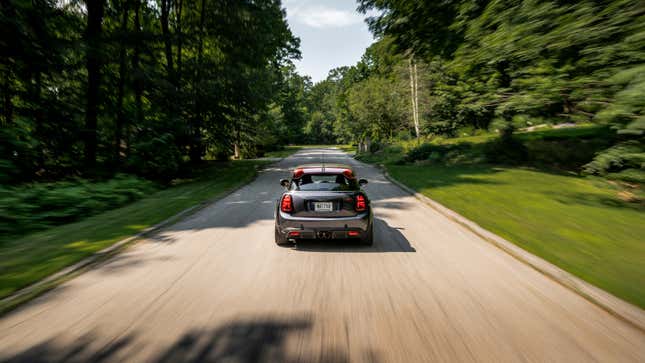
Verdict
With the context that this Mini is expensive as hell out of the way, I think the changes to this generation still resulted in a characterful car, for better or worse. To say the GP3 has drastically changed from the original 2006 model, “for better or worse,” is totally a cop-out on my part, but I think I can explain.
If I hadn’t driven the original GP, the 2021 JCW GP’s quite whelming character likely would’ve had a greater impression on me. I’m quite capable of managing my expectations, and it was no surprise when this car didn’t get a supercharger nor a stick shift. But the part of me that will forever be chasing the experience of hearing and feeling the original try to tear away from me again is still disappointed.
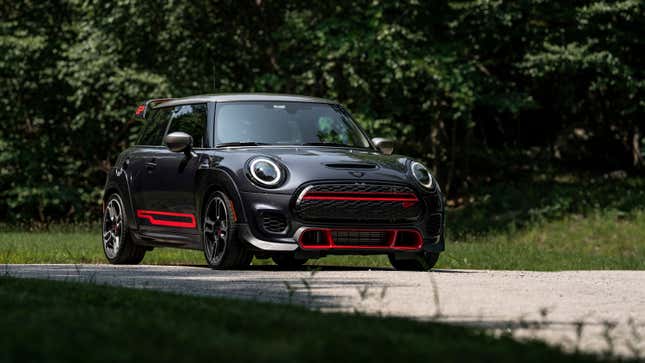
The first GP was about chasing track times as much as it was about achieving those goals with the most sensational methods. The focus was on the overall experience. And there’s no doubt the second-gen GP lost most of that charm, and the GP3 even more still. We stray further from god’s light, etc.
But legacy brushed aside, mechanically what the 2021 GP offers is an entertaining and well-executed 300-HP front-wheel drive hot hatch that still throws out hints that it wants to hurt you, and that’s nothing to bitch about.
